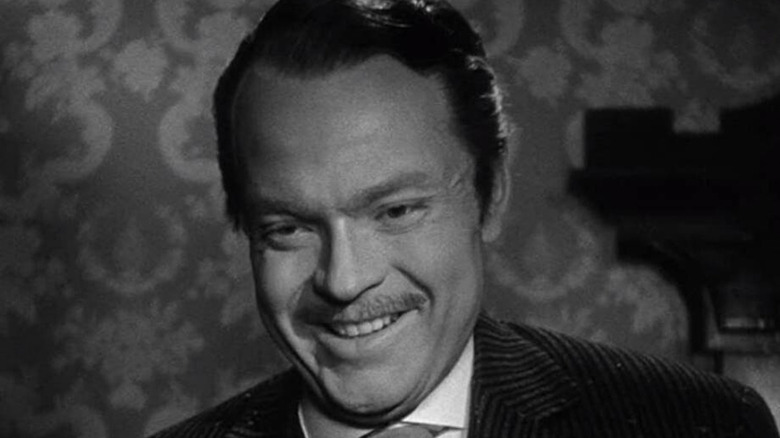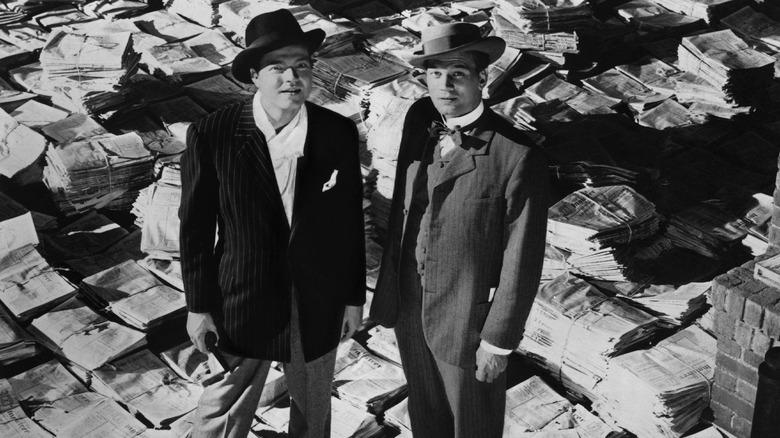What Is Rosebud In Citizen Kane?
Whenever the debate of greatest movie of all-time is brought up, classic film "Citizen Kane" is frequently cited by critics as most deserving of that lofty title. Upon its release in 1941, Orson Welles' masterpiece enthralled critics with its nonlinear storytelling, innovative cinematography, superb acting, and vigorous screenplay. Until recently, it was the highest-rated film on Rotten Tomatoes, only losing its perfect score when a negative review from 1941 was added. One of the reasons "Citizen Kane" maintains such intense fascination with film fans 80 years later is the title character's resemblance to media tycoon William Randolph Hearst. When it was released, Hearst unsurprisingly detested the film, banning any mention of it in his newspapers. He also used his Hollywood connections to limit its theater distribution.
Many believe Hearst's suppression of "Citizen Kane" was the primary reason it underperformed at the box office. Indeed, it took a few years before critics began to reappraise the film, eventually leading to its all-time classic consensus. One specific element of the movie's plot set it aside from other films. It's also the narrative device that sets the story in motion: the mystery of Rosebud.
Rosebud symbolizes childhood innocence
In the opening scene of "Citizen Kane," an aging Charles Foster Kane (Orson Welles) lies on his deathbed in his Florida mansion, Xanadu. Holding a snow globe, he quietly whispers the word "Rosebud" before dropping the object to the floor. From there, reporter Jerry Thompson (William Alland) is tasked with discovering the meaning behind the news tycoon's last utterance. As it turns out, Rosebud was the name of a sled Kane possessed when he was a child. Most importantly, the sled accompanied him on the day he was taken from his home in Colorado. The mystery is ultimately never resolved, as the film ends with the titular sled being unceremoniously tossed into a bonfire with Kane's other belongings.
Decades later, Rosebud remains one of the most compelling plot elements in film history. It's also one that's been heavily referenced and parodied, including by a 1993 episode of "The Simpsons" and the character of Mr. Burns and his stuffed bear, Bobo. Nevertheless, it retains its power in adding humanity to the heart of a complex story.

